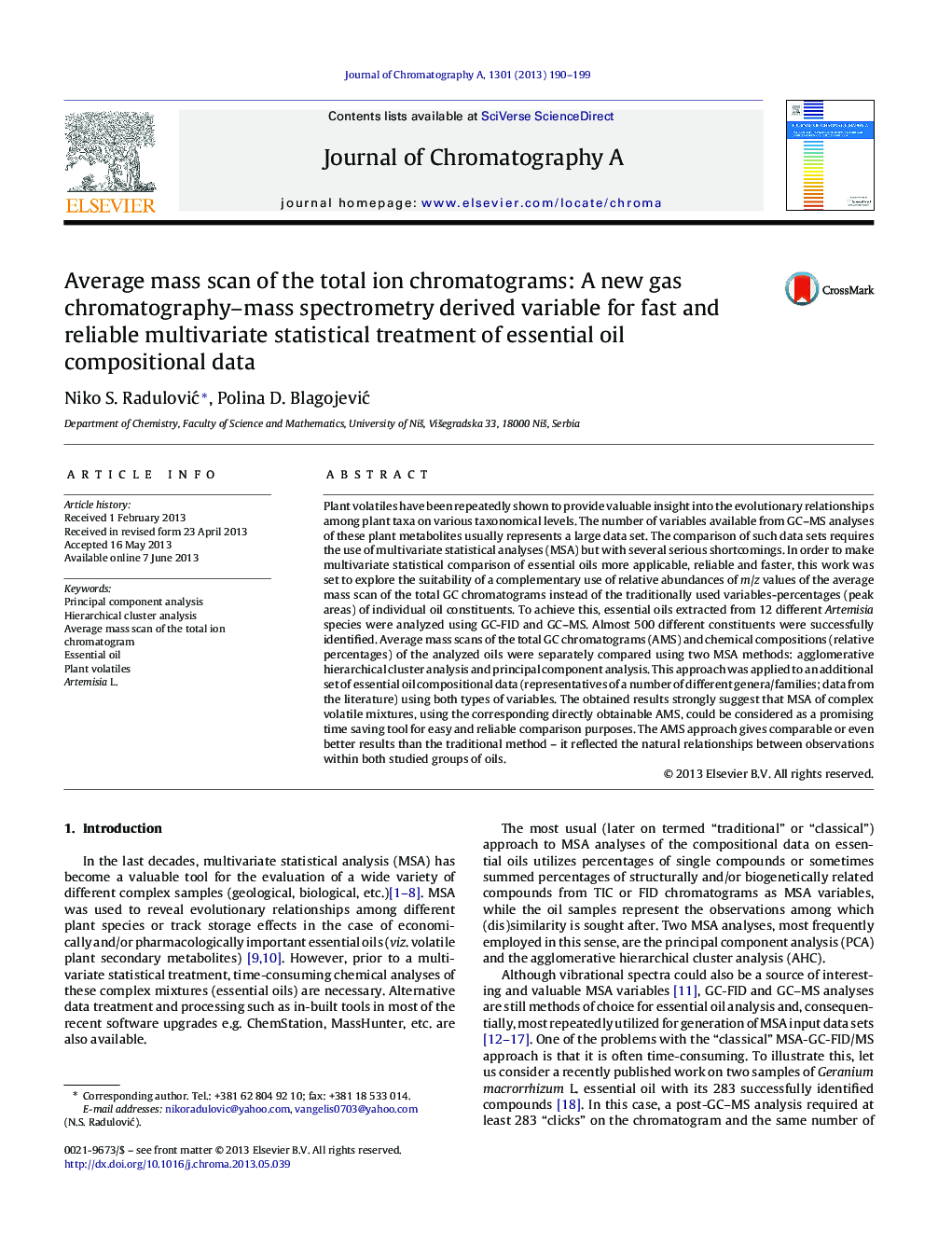| کد مقاله | کد نشریه | سال انتشار | مقاله انگلیسی | نسخه تمام متن |
|---|---|---|---|---|
| 1200824 | 1493625 | 2013 | 10 صفحه PDF | دانلود رایگان |

• Evolutionary trends from multivariate statistical analysis (MSA) of plant volatiles.
• Traditional (percentage composition) vs. new (GC–MS average mass scan) AMS approach.
• AMS-MSA enables fast, easy and reliable comparison of volatile plant profiles.
• AMS-MSA provides additional insight into (bio)chemical links between volatiles.
Plant volatiles have been repeatedly shown to provide valuable insight into the evolutionary relationships among plant taxa on various taxonomical levels. The number of variables available from GC–MS analyses of these plant metabolites usually represents a large data set. The comparison of such data sets requires the use of multivariate statistical analyses (MSA) but with several serious shortcomings. In order to make multivariate statistical comparison of essential oils more applicable, reliable and faster, this work was set to explore the suitability of a complementary use of relative abundances of m/z values of the average mass scan of the total GC chromatograms instead of the traditionally used variables-percentages (peak areas) of individual oil constituents. To achieve this, essential oils extracted from 12 different Artemisia species were analyzed using GC-FID and GC–MS. Almost 500 different constituents were successfully identified. Average mass scans of the total GC chromatograms (AMS) and chemical compositions (relative percentages) of the analyzed oils were separately compared using two MSA methods: agglomerative hierarchical cluster analysis and principal component analysis. This approach was applied to an additional set of essential oil compositional data (representatives of a number of different genera/families; data from the literature) using both types of variables. The obtained results strongly suggest that MSA of complex volatile mixtures, using the corresponding directly obtainable AMS, could be considered as a promising time saving tool for easy and reliable comparison purposes. The AMS approach gives comparable or even better results than the traditional method – it reflected the natural relationships between observations within both studied groups of oils.
Journal: Journal of Chromatography A - Volume 1301, 2 August 2013, Pages 190–199